Published: 2nd January 2024 | Author: Tanya Russell
Bronze sculptures can look elegant and timeless, and add real character to any space they are displayed in, if you display them in a way that complements your home and garden. If you have invested in a statue for your home or garden, some thought about how to display your sculpture can make the difference between enhancing the beauty of your artwork and making it a focal point in your space, and creating a cluttered environment.
In our guide, we have pulled together some creative expert tips on displaying your bronze sculpture, whether you have invested in a life-size piece or a small mantelpiece-sized statue, including how to safely display your sculpture to keep it looking its best.
Ideas for Outdoor & Garden Bronze Sculptures
Outdoor spaces provide a unique opportunity to showcase bronze sculptures in natural or designed settings. The outdoor space you have available can appear restrictive, but it actually provides a multitude of different potential sites to locate bronze statues. After investing in a life size or garden bronze sculpture, or planning to do so, here are some ideas for displaying your artwork outdoors:
Integrate it with Water Features or Ponds
Streams, water-meadow, ponds and fountains have innate energy, beauty, or calm, which can be complemented by a statue installation.
This is a great way to display thematic sculptures that are closely associated with water, such as fish, underwater animals or birds that are commonly found near water. Think about how your water is acting in your garden. If your water feature is smaller, and already a focal point, like a fountain or waterfall, then spacing sculpture in secondary locations beside it can create a complementary effect. For example, a spot you discover by seeing the water feature from a different angle, can create new views and ways to appreciate your water. This could be a partly hidden location in planting, or under the branches of a tree, or amid seasonally flowering plants that look different at different times of the year.
If the water feature is large, like a big garden pond, it might be too large to be a focal point in itself and might benefit from adding a more dominant sculpture that acts as focal point for your eye to rest on. In this case, the sculpture you choose might be larger, or you might consider a more central position beside the water, or in it. When placing statues beside large ponds or lakes, the views are often a more important considerations, and so you should ask, can you place the statue within the view, or can you frame the view over the pond using.
Placing a statue in the water in a pond, stream or swimming pool. Both foundry bronze metal statues and bronze resin sculptures can be placed in a pond, but you should avoid placing foundry bronze metal in chlorinated water or salt water. If building a new pond, consider leaving an island, or building in a concrete pedestal to place a sculpture on. In older ponds, check the depth of the pond – most are much shallower than you think! A pedestal can be retrospectively placed in the water, but make sure you know if your pond has a pond liner, and take steps not to perforate it by gently placing a base with a larger surface area on the bottom first.
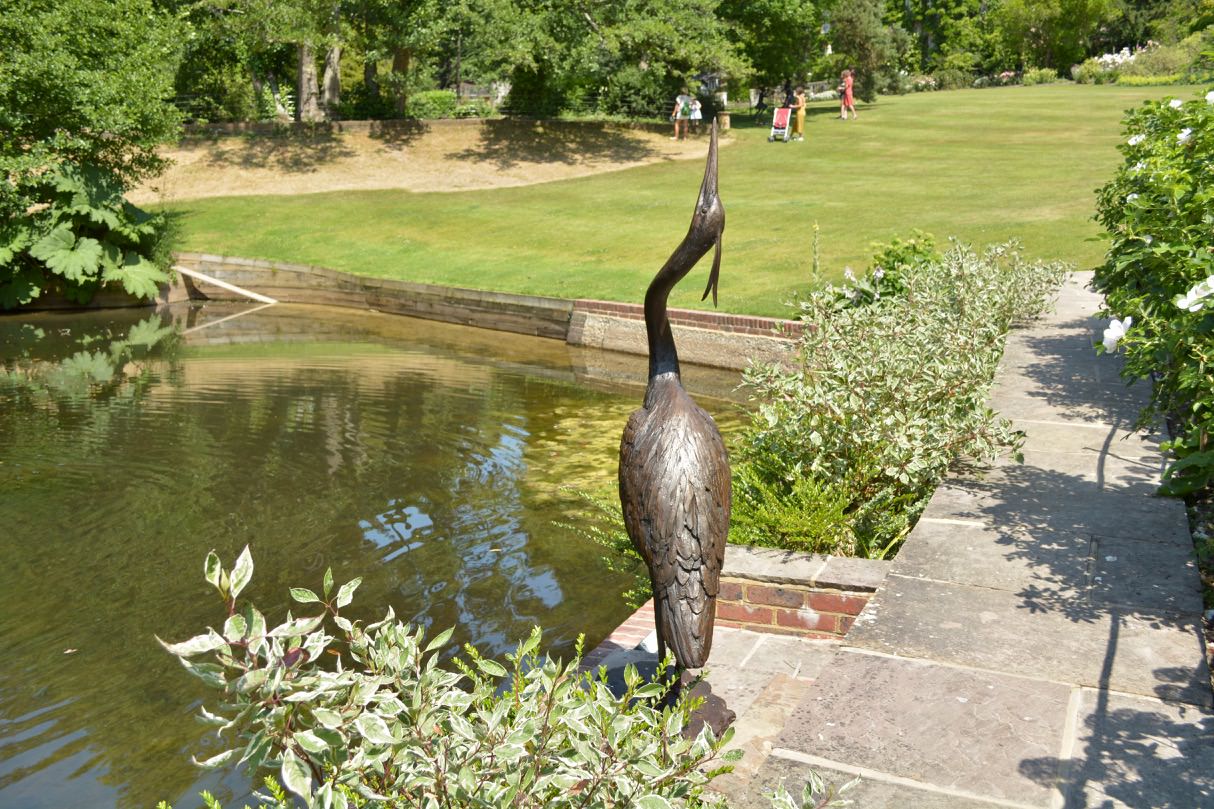
Our Bronze Standing Heron Sculpture displayed outdoors by a pond.
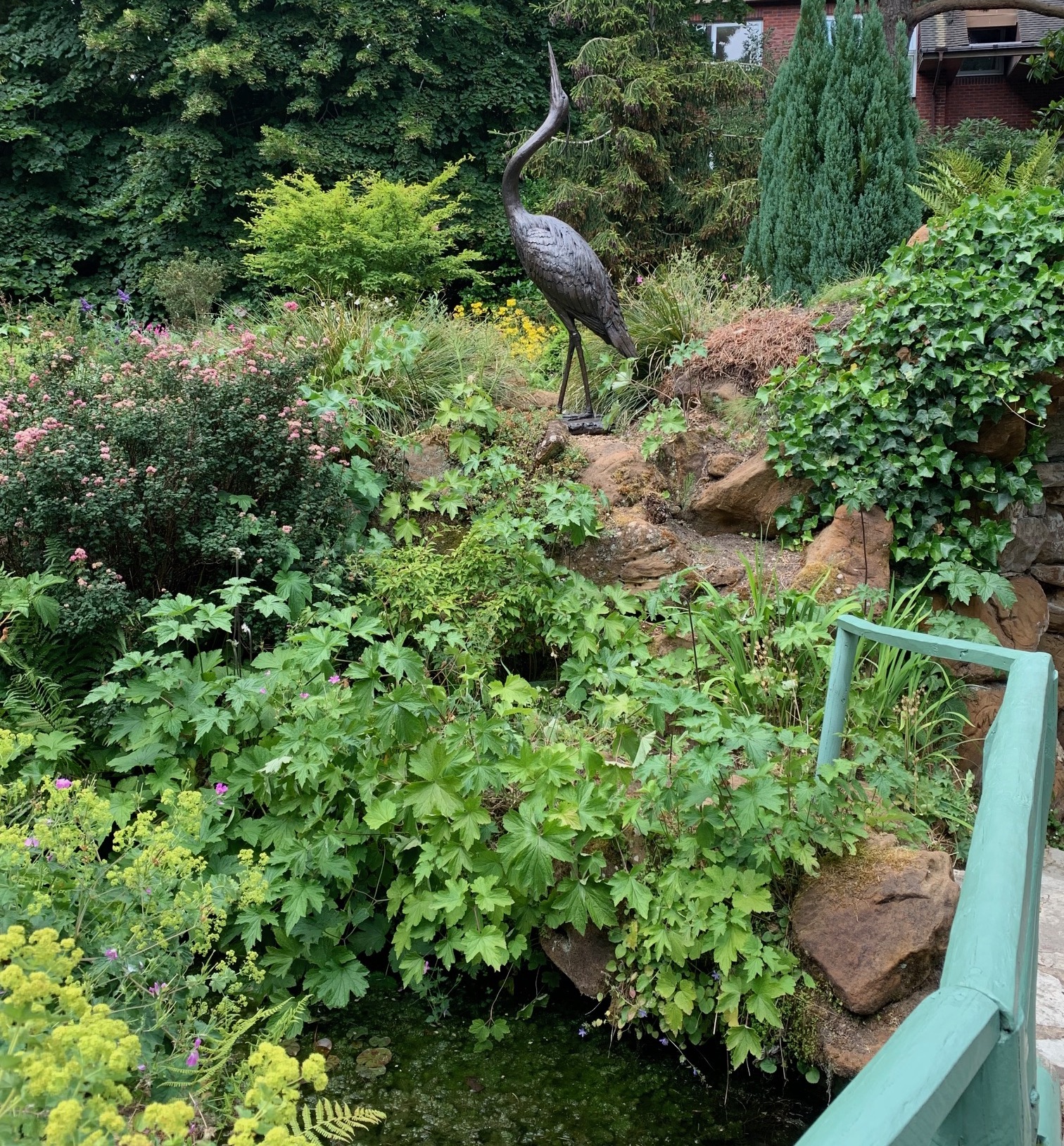
The same Heron acting as a place to rest the eye amongst planting beside a pond.
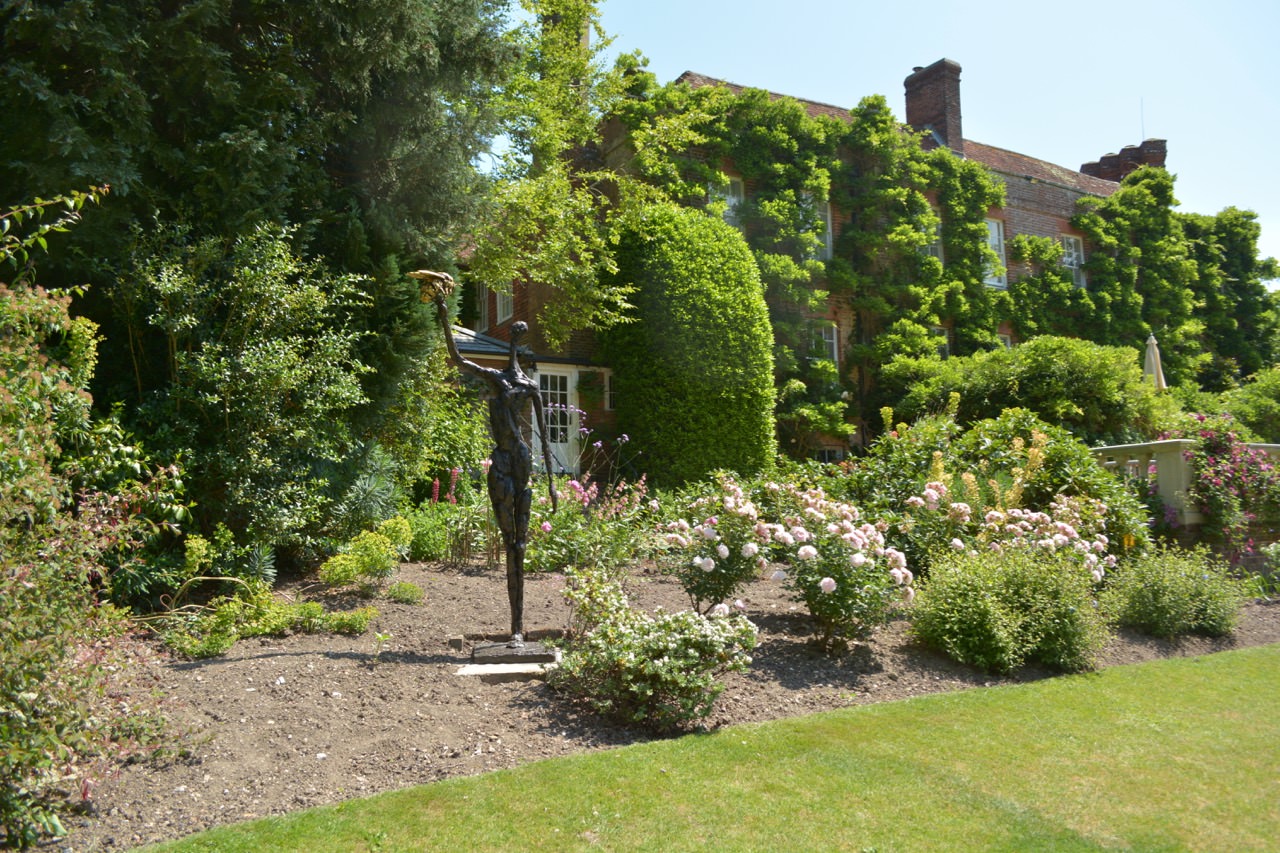
“Fragile Life” sits in traditional rose beds, the abstract sculpture bringing a contemporary look
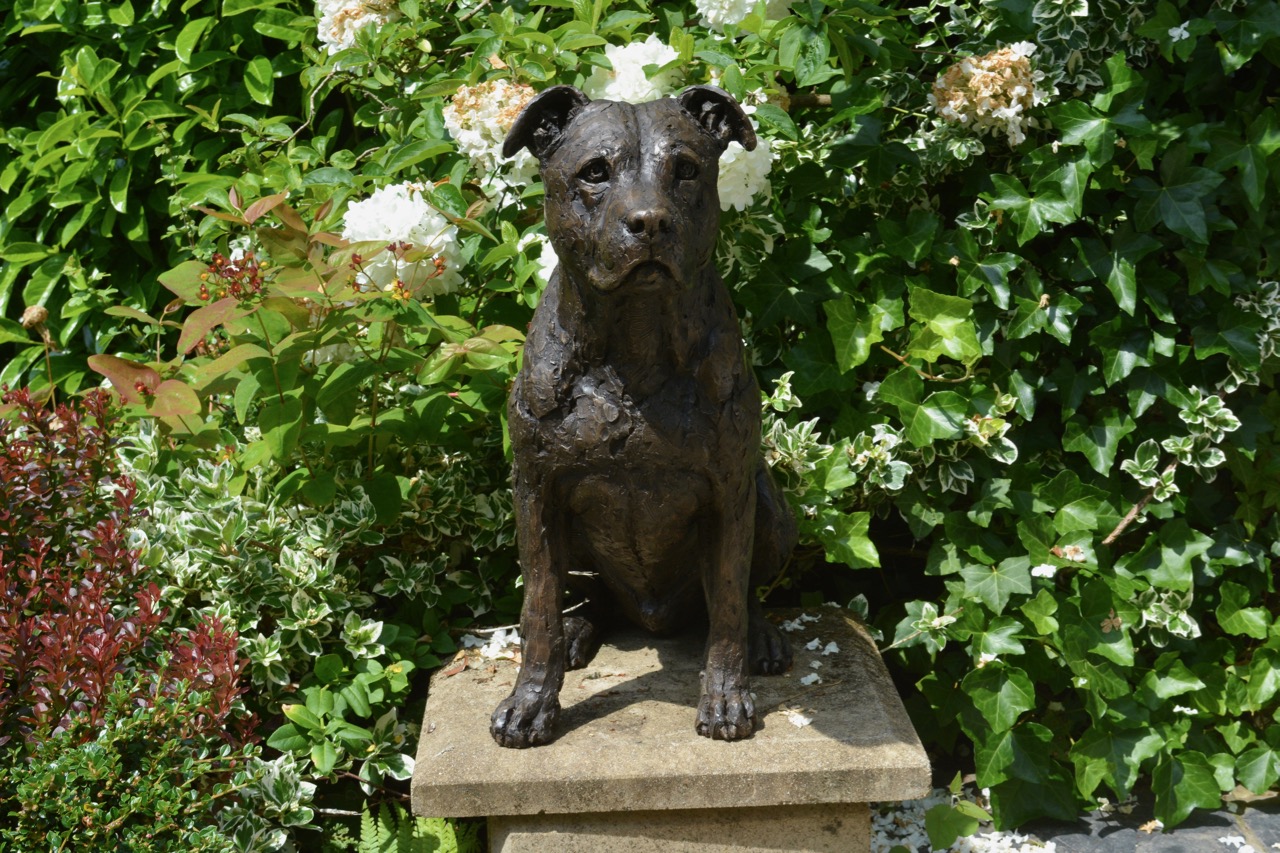
Bronze American Staffordshire Bull Terrier sculpture is strong, powerful looking statue, that is softened by the leaves and blossoms, while still forming a beautiful focal point
Amongst The Landscape & Flowerbeds
Another display idea is to integrate your bronze sculpture with the landscape by positioning them amidst rocks, boulders, or within garden beds. As with the water feature display recommendations, if you have sculptures that have thematic similarities with the landscape they are being placed in, it is a lovely way to pay tribute to the animal or subject the sculpture is representing.
The example to the left showcases Tanya Russell’s “Fragile Life” amongst the flowerbeds. The sculpture represents the relationship between humans and nature, and therefore placing it amongst the flowerbeds is a lovely way to pay tribute to the wildlife represented in the piece.
When locating a statue amongst planting, you might want to consider elevating it on a plinth. Plants and shrubs can grow a great deal through the year, so a smaller sculpture, or even a larger one can benefit from being elevated on a sympathetic plinth. Brick plinths topped with a flagstone, wood plinths made with a block of raw wood, or a reshaped stump, and fabricated plinths made of concrete, stone, metal or resin can all work well.
The American Staffordshire Bull Terrier to the left is sitting on a cast stone plinth. These are quite affordable and commonplace, and are a nice alternative to using flagstones and brick.
When placing statues amongst plants, consider the growth of the plants and the labour you will need to keep a sculpture visible. It can be less work to position the statue further forward in the flower bed, or beside slower growing plants, shrubs and ivy. You also want to think about the colours of the surrounding leaves and flowers. Bronze is uplifted by lighter colours, like the fresher greens. If you garden design is quite contemporary, trees with seasonal or all-year round coloured leaves, like acers, can make a traditional material look quite modern.
Making the most of a view
Rural homes and well designed urban ones can often benefit from a special view. From the historical Italianate garden, to the parkland view, to the modern stone garden – statues can be integrated into views to define, or uplift them. The human eye travels through a garden much like a painting. Your experience of your garden includes conscious recognition of placement, but also subconscious recognition of negative space. A view represents the largest use of negative space in your garden design, and shaping that space to create the impression of a longer, or wider, or well-framed view is important. Larger bronze garden sculptures are commonly placed either side, or central to a view. They may create a view by blocking distracting and unwelcome elements. Groupings of sculptures, such as herds, or pairs, can make a blank part of the garden work to create a more interesting view. Even a small garden with ‘no view’ can suddenly create one by placing a statue in front of an under-used area in front of a hedge or tree line.
Your own house may form an important view, with the approach up to it tailored by the placement of selected statuary. A traditionally styled home might be enhanced by a stag, or it might be made contemporary through the juxtaposition of an abstract sculpture.
Memoriam Sculptures
One common reason that people often choose to get a bronze sculpture commissioned is in memory of their beloved pet. When paying tribute to a pet with a life sized outdoor bronze sculpture of them, it’s always a lovely idea to place the sculpture in an area that recalls the enjoyment they had in your garden. Alternatively, if their last resting place is at home, placing a statue (or a simple plaque, or stone) over their ashes or grave can act as a focus for your memories of them.
Below, you can see some examples of displayed memoriam sculptures. The first shows the Pointing Weimaraner sculpture, a commission of Monty, who was commissioned by his family to have something to remember their old boy by. The second photo show the Running Working Spaniel sculpture, a commission of Maggie who passed away, sculpted with the boundless energy she had in life.
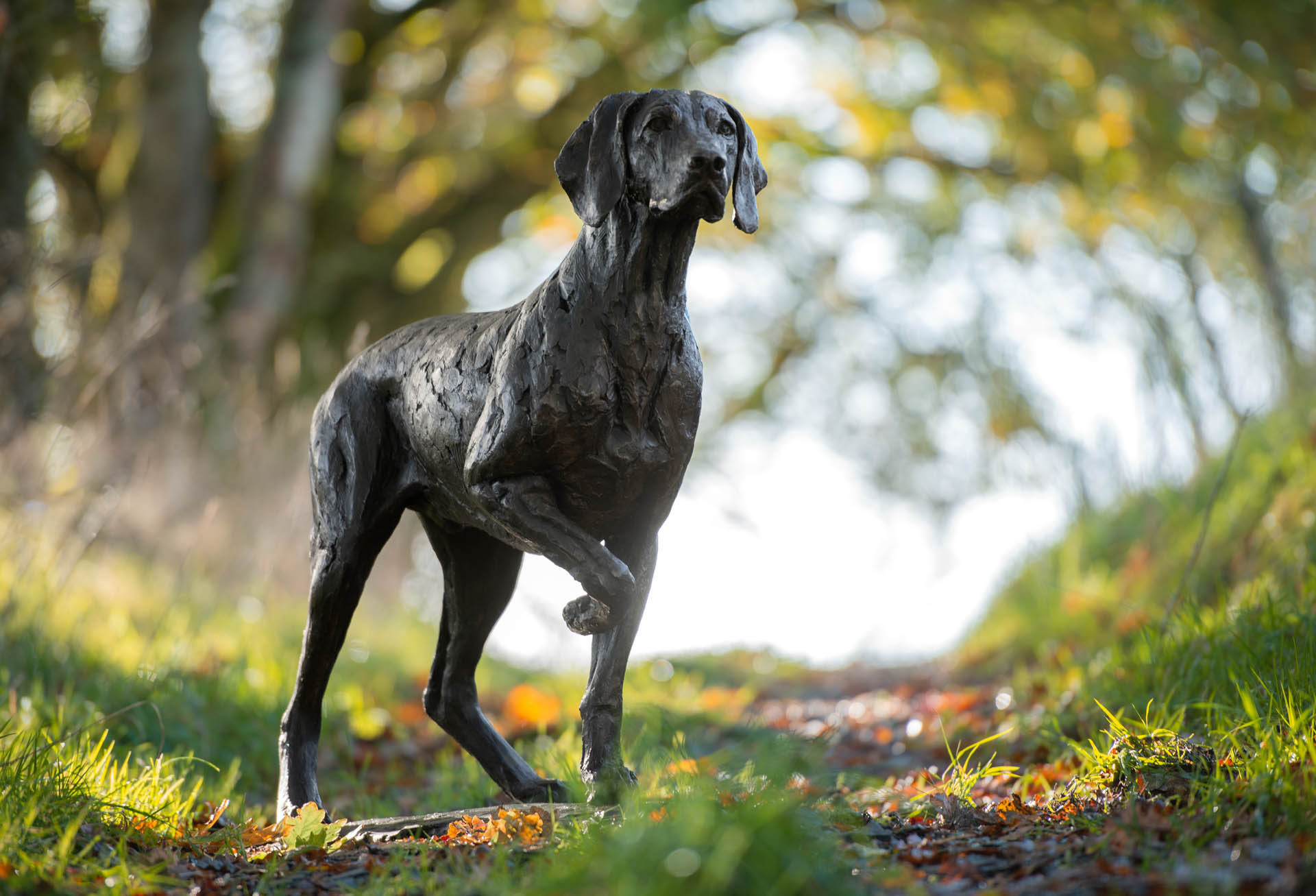
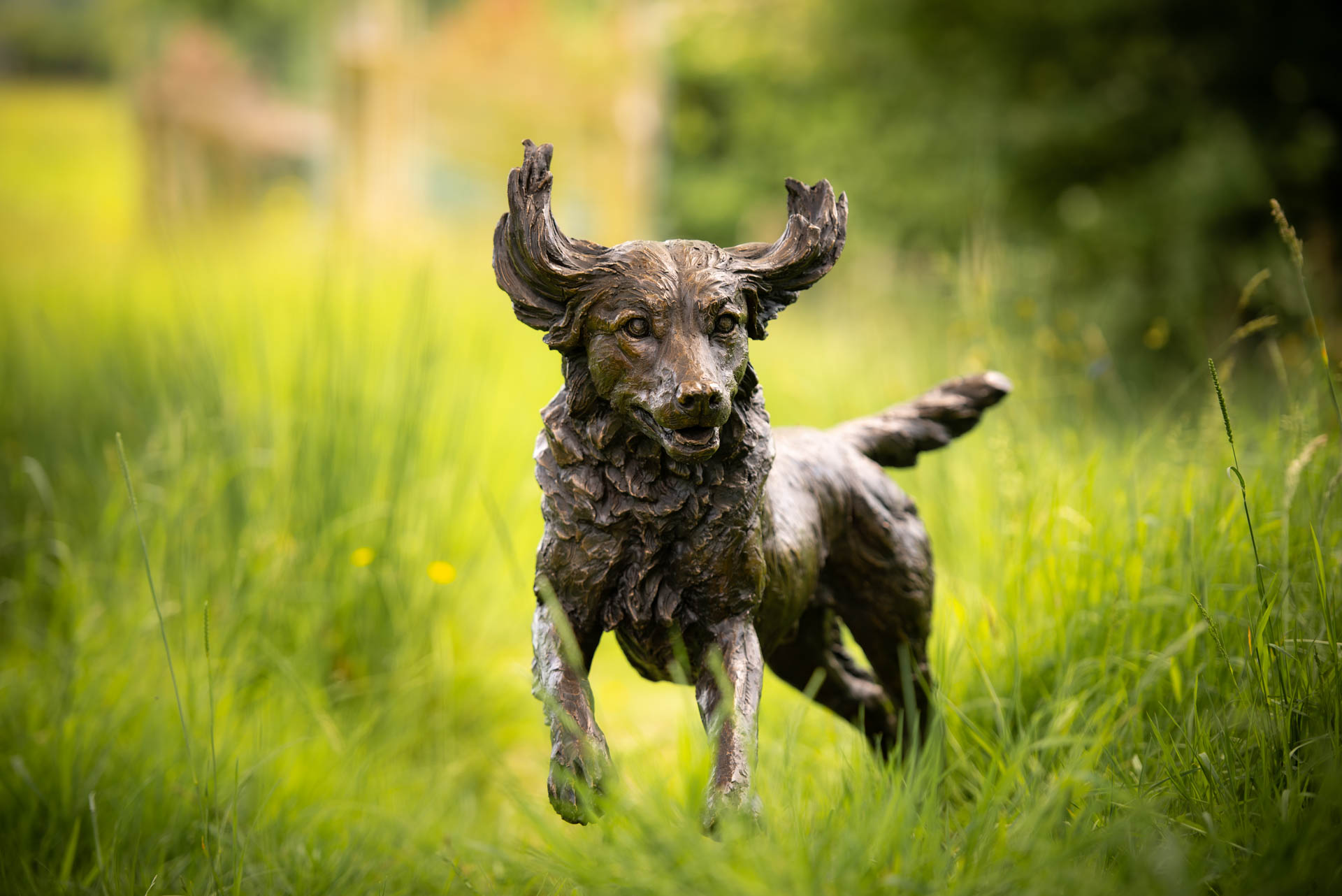
Ideas for Small & Indoor Bronze Sculptures
For smaller sculptures, the way you choose to display them can very much depend on the indoor space you have available as well as the type of bronze sculpture you have. In general, we recommend displaying your bronze in a well lit room, but away from direct sunlight, in order to get the most out of your artwork.
Here are a few recommendations for locations within your home or property where bronze sculptures look great displayed indoors.
Mantelpieces
A mantelpiece is a very traditional and elegant way to display your bronze sculpture indoors. Mantelpieces are generally an architectural focal point in any home, and placing your bronze sculpture on it can enhance your space and allow you to appreciate your bronze art every time you enter the room.
Window Sills
Window sills are another wonderful location for smaller bronze sculptures being displayed indoors, particularly if your property does not have a mantelpiece. Window sills are great because they are one of the lightest places in the home to display artwork and decor, which can help really bring out some of the artistry in the bronze and highlight intricate detail on your sculpture.
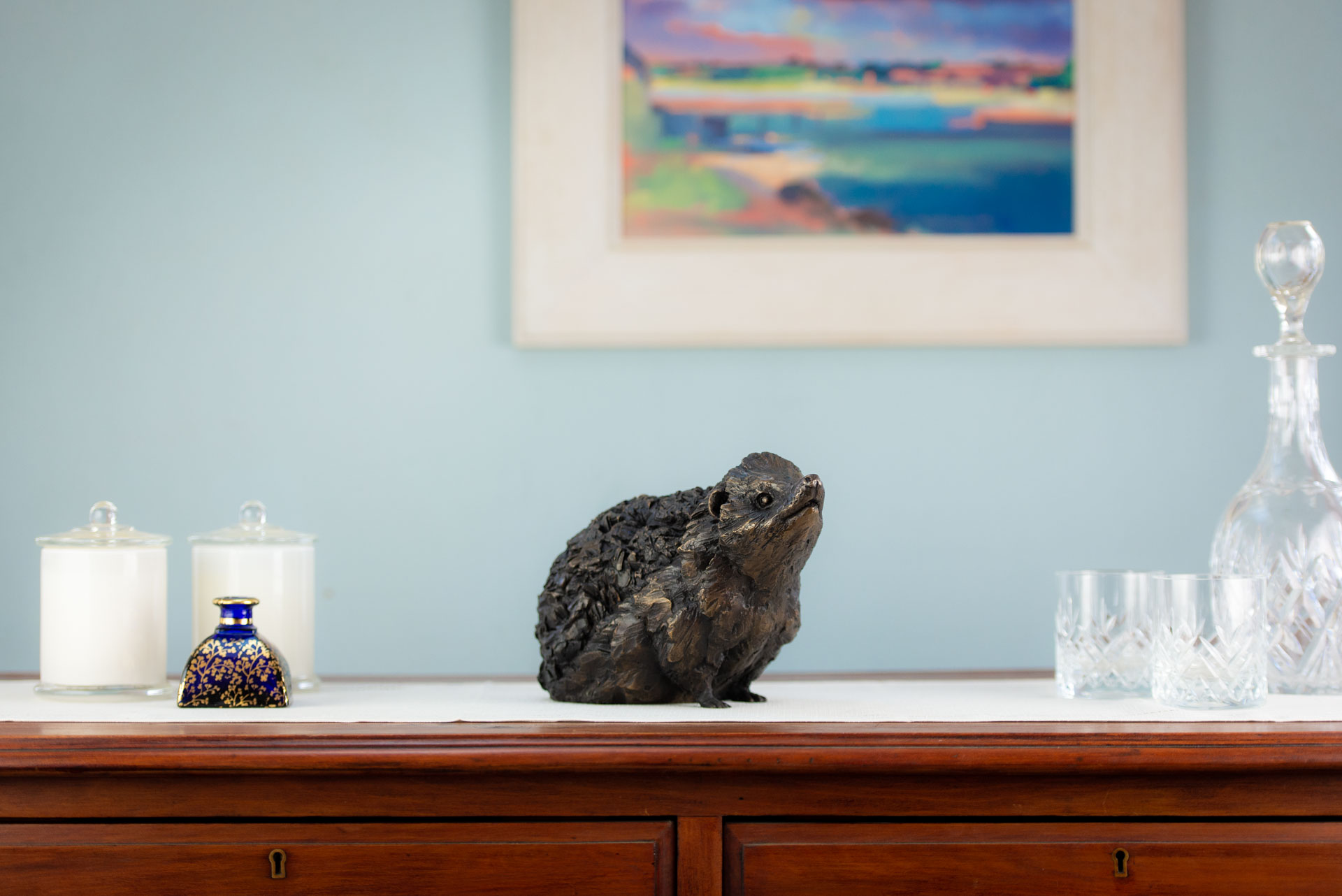
Our Bronze Hedgehog Sculpture displayed on the mantelpiece.
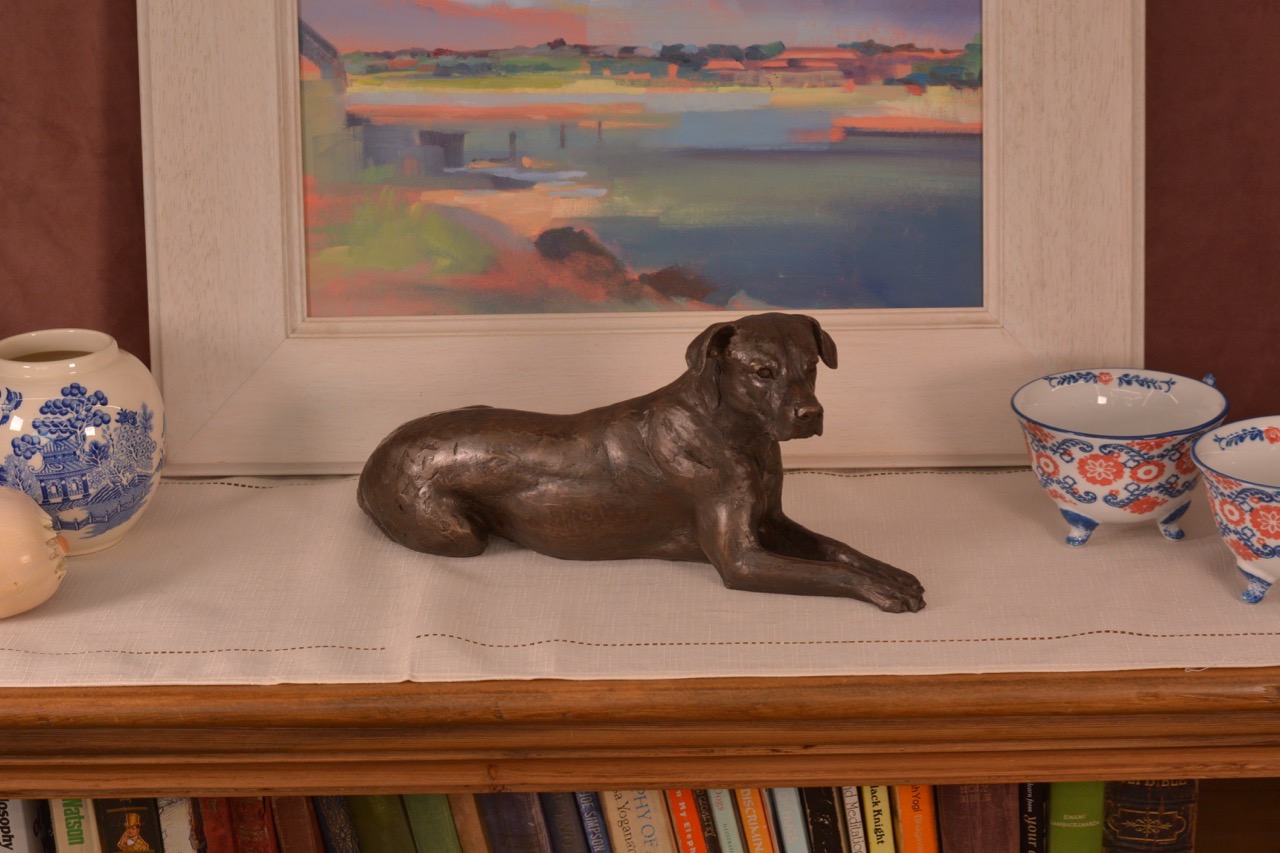
Our Bronze Mixed Breed Rescue Dog Sculpture displayed on a bookcase amongst vases and framed artwork.
Shelving and Bookcases
Other shelving and bookcases again can be great spots for bronze sculptures, particularly because these can be multilayered and therefore your bronze sculpture can help enhance the texture and dimension of these room fixtures.
Books and other decor such as vases or wall art can help to further enhance your bronze in the room, and displaying your bronze with items such as these can help to complement them in return.
Glass-Fronted Cabinets
Glass-fronted cabinets can be a good space for displaying your bronze sculpture, particularly if they are cabinets that are display-specific. Usually, these cabinets will have LED lights built in which can be used to spotlight your artwork in the cabinet, illuminating during the evening which allows you the enjoy the bronze whatever time of day it is.
They are also a consideration if you are in a household where you are worried your bronze could be knocked off a cabinet, such as a house with young children or pets.
Indoor Plinths
Indoor statue plinths can work really well to elevate your sculpture in a place you wouldn’t otherwise be able to place it, such as beside a staircase, near a window, or in a corner of a room. Being indoors, your plinth materials don’t have to withstand the weather, so a simple wooden box painted with house paint can work really well.
Tips for Safely Displaying Your Bronze Sculpture
In addition to all the above display ideas, it’s also important to understand some tips that will ensure the safety and preservation of your bronze sculpture.
Proper Cleaning and Maintenance
Regularly clean your bronze sculpture to remove dust and prevent tarnish. Refer to our article on bronze sculpture maintenance for detailed cleaning instructions.
Secure Placement
Ensure your sculpture is placed on a stable and level surface. For outdoor sculpture, securing your sculpture is essential for theft prevention. Explore our article on securing outdoor sculptures for more details.
When to Avoid Direct Sunlight
Prolonged exposure to direct sunlight can damage bronze resin sculptures, which can crack in the greenhouse effect of a south-facing window. This is most relelvant for sculptures with thin, weight-bearing sections, though you can mitigate this by placing them away from windows or using UV-protective window film. You can read more about the effect of sunlight on bronze sculptures in our article on how the weather affects bronze.
Control Humidity
Extreme humidity can lead to colour changes, which are manageable, but can come as a surprise. We recommend placing your sculpture in a stable indoor environment with moderate humidity levels.
Inspecting your sculpture
Periodically inspect your sculpture for signs of accidental damage, or unusual colour change. Take a read of our article on repairing bronze sculptures if you do accidentally damage your sculpture.
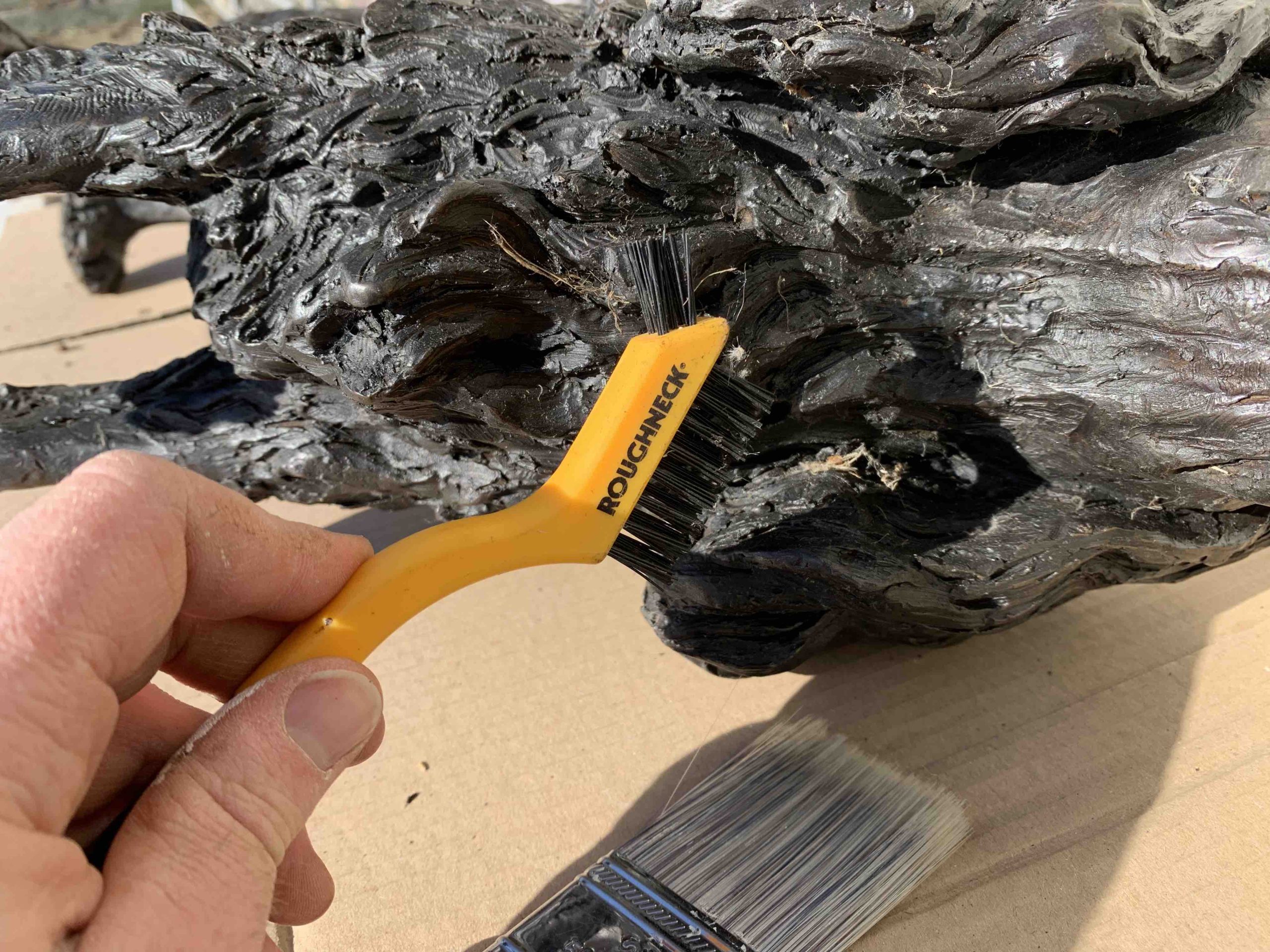
Regular cleaning of your bronze sculpture can help keep it looking its best.
To Summarise
In conclusion, displaying your bronze sculpture is an art in itself. Whether you’re decorating an indoor or outdoor space or showcasing small or large sculptures, careful consideration of placement, lighting, and environment can transform your space. Prioritising the safety and maintenance of your bronze sculptures can help to ensure they continue to look fantastic and inspire for generations to come.
Explore Related Articles
ASTON VILLA F.C. unveils my Lion to celebrate their 150th year
Due to be unveiled in May, I have created a to scale clay, which is now being cast in Foundry Bronze metal
How to measure your dog in a Lying Down pose, for a customised statue commission
If you think you might want a statue in the future, it can be a good idea to take some measurements of your own dog. Here’s how to measure them in a lying down position.
Sculpture plinths, pedestals and columns for statues
Finding the right plinth or pedestal for your statue: including a list of suppliers, some examples of different type of pedestal, how to make your own a plinth, how to fix a statue onto a plinth.

Tanya Russell MRBS
Bronze Sculptor
Tanya Russell has become well known over the last 30 years for her life-like and vibrant animal sculptures.
Having apprenticed for 7 years with her parents, sculptors Lorne McKean FRBS and Edwin Russell FRBS and after practicing as a sculptor for a number of years, she founded the The Art Academy in London Bridge, now a thriving art college. She has completed many public and private commissions nationally and internationally.
For Tanya, her practice is not only about capturing the animals she sculpts with marks and movement. It’s about our relationships with those animals and their welfare.

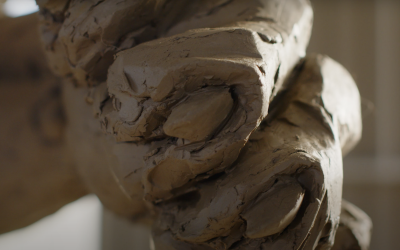


Follow The Artist
Keep up to date with Tanya's latest work!